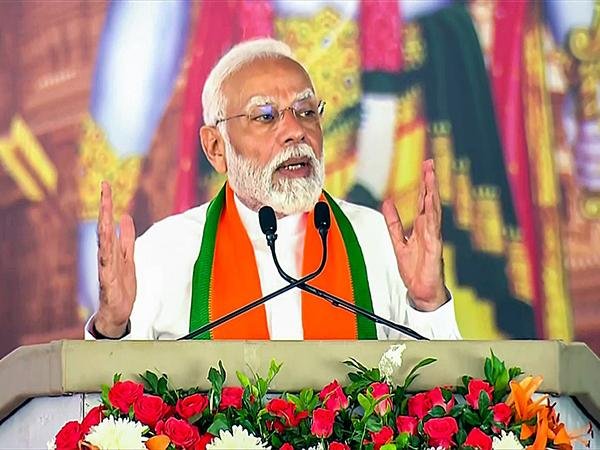PM Modi at Ram Mandir event: In India, the third week of January has always been a time of nationalistic pageantry. It includes two national holidays: the birthday of Bengali revolutionary Subhash Chandra Bose, and the anniversary of the adoption of India’s liberal Constitution in 1950. On Republic Day, not only tanks, missiles, bagpipes and others are displayed in parades across the country. Flags, but also folk dances and cultural achievements – all things that contribute to the famously vibrant public life of this country.
This year, however, all this republican tradition will be eclipsed by celebrations both old and new: Monday’s inauguration, or perhaps the re-consecration of the temple of Hindu god-king Rama in Ayodhya.
Ayodhya is a small town in the vast northern state of Uttar Pradesh where Hindus believe Rama lived and ruled, and which, until recently, has been the site of a land dispute between Hindu and Muslim litigants that has dragged on for decades. Has shaped the politics of India since. The temple is being built close to the spot where tradition says Ram was born, and on the site of a mosque named after India’s first Mughal emperor, which was surprisingly destroyed by a Hindu mob in 1992 .
In more than three decades, Indian politics has completely changed. The result of an act once rejected by leaders across the political spectrum will be celebrated almost universally this week. Politicians, actors and even billionaire industrialists will join in on the carefully choreographed spectacle: one tycoon in Davos declared that the temple consecration should be seen by the world as “a reflection of the goodness of India”.
At the center of this crowd will be one man: Prime Minister Narendra Modi. This is not at all surprising, but this must have been the case for most of India’s history. Modi’s central role in this ritual goes a long way to explain why, as he prepares to launch his campaign for a third term, his position in India’s fractious politics seems unbeatable.
India’s Prime Minister is now above and beyond mere politics: for a solid plurality of voters, he has become a representation of the revival of both faith and state. Mohandas K. No Indian leader since “Mahatma” Gandhi has been so closely associated with its predominantly Hindu civilization and religious heritage. And Modi has been more explicit about his commitment to the project than the British-educated Gandhi. The Mahatma was always conscious that the communal fabric of India was fragile and he mostly tried to reform it; Under Modi it has broken down dangerously.
It would be too simplistic to see Modi’s symbolism in Ayodhya as purely anachronism, a conscious attempt to return the country to some lost Hindu golden age. Like Gandhi, Modi’s revivalism is also radical and reformist – as underlined by the fact that he is neither a Brahmin, performing religious duties, nor a Kshatriya, who is expected to have temporal power, and Yet he will preside over a temple function. In his own words, it is a divine “instrument representing all the people of India”.
Modi’s Bharatiya Janata Party originally came to power on the back of the Ayodhya temple construction movement. Since then, the stature of the Prime Minister has diminished compared to the stature of the party. He has bloodlessly fulfilled two of the three demands that Hindu nationalism has always made from the liberal Indian state: the temple, and the revocation of the special status given to Muslim-majority Kashmir after independence. The third achievement – the end of separate civil laws governing India’s religious minorities – seems possible to achieve if Modi wins a third term, as most observers expect.
Moreover, Modi achieved all this, his followers will say, within the parameters of India’s Constitution. It would be more accurate to say that, in both cases, the overwhelming popular sentiment was validated by the Supreme Court of India. Judges who stood in the way of previous leaders – such as India’s first Prime Minister, Jawaharlal Nehru – have not hindered Modi or the political project he has created.
Therefore, a large section of the celebrants will also be happy that the long resistance to the secular state that Nehru built after independence is finally over. Just a year after India became a republic, in 1950, its first President wanted to be present at the re-consecration of another historic temple. Nehru sternly told him that if he went, he would not go as President but as a private citizen and would receive neither the security nor the protocol he was entitled to. The contrast with Modi’s India, where the prime minister himself is at the center of this week’s religious celebrations, is telling.


